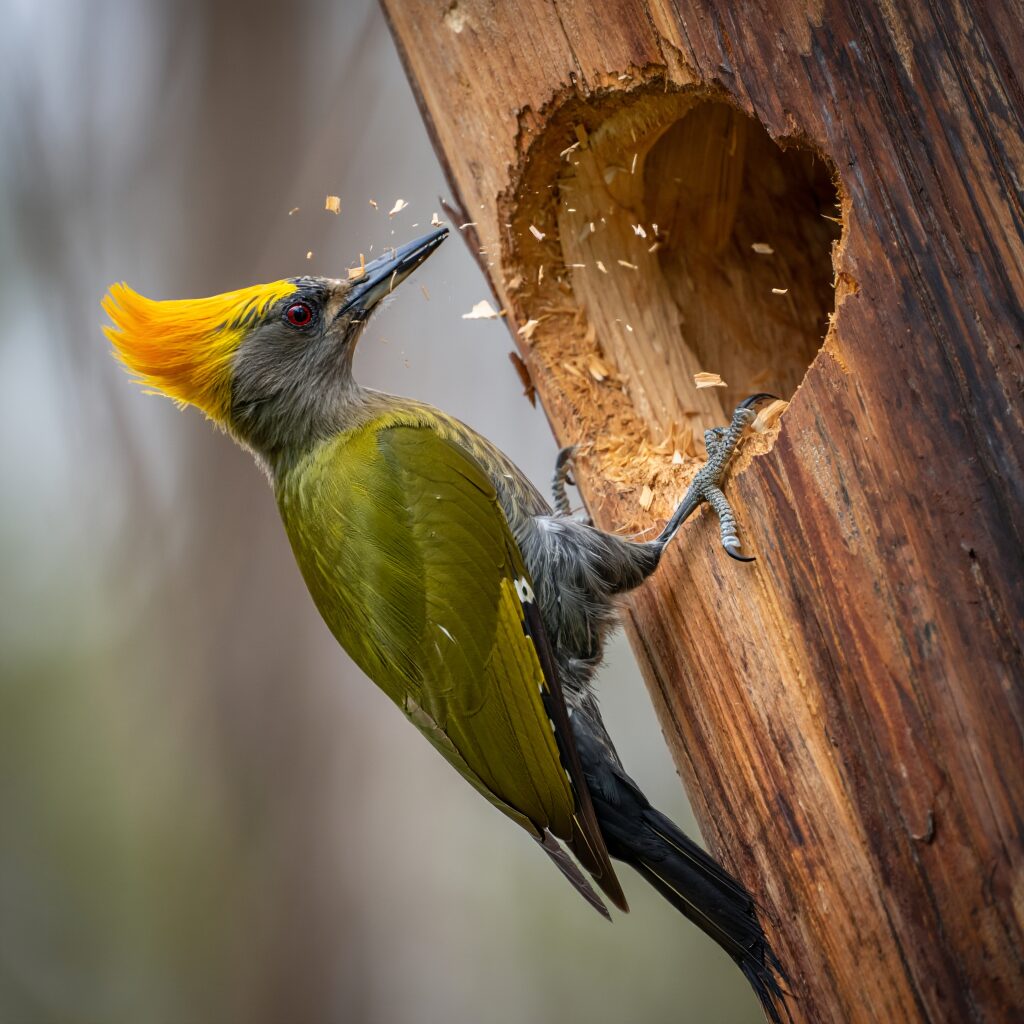The Greater Yellownape (Chrysophlegma flavinucha) is a striking woodpecker of the Asian forests, instantly recognizable by its vivid yellow nape and bold green wings. With a long, sturdy bill and a bright crest that flares like a torch, it looks like a creature forged from sunlight and moss.
Found across the broadleaf and evergreen forests of the Himalayas, Southeast Asia, and southern China, this bird is a tireless forager. From dawn until dusk, it moves methodically along trunks and branches, hammering, prying, and probing for insects hidden beneath bark and wood. Its sharp blows echo through the trees — not random, but rhythmic and purposeful.
This woodpecker isn’t just persistent — it’s adaptable. It uses its long tongue, tipped with sticky barbs, to pull ants, termites, and beetle larvae from deep crevices. It also visits tree sap wells and occasionally feeds on fruit. Whatever the season, it’s always in motion, working to extract every calorie the forest can offer.
Nesting, too, is a labor of commitment. The Greater Yellownape excavates its own cavity high in a tree trunk, carving out a clean, deep chamber that will shelter its eggs and chicks. Both parents take turns incubating and feeding the young, returning with beaks full of insects over and over again.
Seen alone or in pairs, this woodpecker is never idle. Even in moments of stillness, its eyes scan the bark, calculating the next move.
Focused. Fearless. A builder of life in bark and echoes.
